Circular Economy in the Building Sector: Investigating Awareness, Attitudes, Barriers, and Enablers through a Case Study in Saudi Arabia
Abstract
1. Introduction
- What is the current level of awareness of CE principles within the Saudi Arabian building sector?
- How do different stakeholders in the building sector perceive CE concepts?
- What are the main challenges faced by stakeholders in adopting CE practices in the building sector in Saudi Arabia?
- What factors contribute to the successful adoption and integration of CE practices in the building sector in Saudi Arabia?
2. Methods
2.1. Research Design
2.2. Data Collection
2.3. Questionnaire Sampling
- n = Sample size.
- N = The overall population size.
- e = The desired precision level (expressed as a proportion).
2.4. Data Analysis
2.4.1. Relative Importance Index (RII)
- = The weighting given to each factor by the respondent, ranging from 1 to 5 where n5 is “Critical” and n1 is “Insignificant”.
- A = Highest weight (in this study: 5).
- N = Overall number of respondents (in this study: 139).
2.4.2. Reliability Analysis
- n = Number of items.
- = Variance of test scores.
- = Total variance of the scale.
2.4.3. Spearman’s Correlation Test
3. Results
3.1. Overview
3.2. Demographic Details
3.2.1. Years of Experience in the Building Sector
3.2.2. Organisation Type
3.3. Circular Economy Awareness, Practice, and Future Implementation
3.3.1. Level of Awareness
3.3.2. Level of Practice
3.3.3. Future Implementation
3.4. Barriers Relative Importance Index Analysis
Barriers’ Relative Importance Index Analysis per Stakeholder
3.5. Correlation Test of the Barriers
3.6. Enablers’ Relative Importance Index
Enablers Relative Importance Index Analysis per Stakeholder
4. Discussion
4.1. Awareness and Attitudes
4.2. Barriers
4.3. Enablers
5. Conclusions
Author Contributions
Funding
Institutional Review Board Statement
Informed Consent Statement
Data Availability Statement
Acknowledgments
Conflicts of Interest
References
- Zuo, J.; Zhao, Z.-Y. Green Building Research–Current Status and Future Agenda: A Review. Renew. Sustain. Energy Rev. 2014, 30, 271–281. [Google Scholar] [CrossRef]
- Global Alliance for Buildings and Construction (GlobalABC). 2018 Global Status Report: Towards a Zero-Emission, Efficient and Resilient Buildings and Construction Sector; International Energy Agency and United Nations Environment Programme: Nairobi, Kenya, 2018. [Google Scholar]
- Liu, J.; Wu, P.; Jiang, Y.; Wang, X. Explore Potential Barriers of Applying Circular Economy in Construction and Demolition Waste Recycling. J. Clean. Prod. 2021, 326, 129400. [Google Scholar] [CrossRef]
- Ali, K.A.; Ahmad, M.I.; Yusup, Y. Issues, Impacts, and Mitigations of Carbon Dioxide Emissions in the Building Sector. Sustainability 2020, 12, 7427. [Google Scholar] [CrossRef]
- Andrews, D. The Circular Economy, Design Thinking and Education for Sustainability. Local Econ. 2015, 30, 305–315. [Google Scholar] [CrossRef]
- Ghisellini, P.; Cialani, C.; Ulgiati, S. A Review on Circular Economy: The Expected Transition to a Balanced Interplay of Environmental and Economic Systems. J. Clean. Prod. 2016, 114, 11–32. [Google Scholar] [CrossRef]
- Ellen MacArthur Foundation. Towards the Circular Economy: Economic and Business Rationale for an Accelerated Transition. Available online: https://ellenmacarthurfoundation.org/towards-the-circular-economy-vol-1-an-economic-and-business-rationale-for-an (accessed on 1 March 2023).
- Rahla, K.M.; Mateus, R.; Bragança, L. Implementing Circular Economy Strategies in Buildings—From Theory to Practice. Appl. Syst. Innov. 2021, 4, 26. [Google Scholar] [CrossRef]
- Preston, F. A Global Redesign? Shaping the Circular Economy. Available online: http://biblioteca.fundacionicbc.edu.ar/images/d/d7/Bp0312_preston.pdf (accessed on 1 March 2023).
- Ellen MacArthur Foundation Universal Circular Economy Policy Goals. Available online: https://ellenmacarthurfoundation.org/universal-policy-goals/overview (accessed on 21 June 2023).
- Ellen MacArthur Foundation; the McKinsey Center for Business and Environment. Growth within a Circular Economy Vision for a Competitive Europe; McKinsey & Company: Mumbai, India, 2015. [Google Scholar]
- World Economic Forum Shaping the Future of Construction: A Breakthrough in Mindset and Technology. Available online: https://www3.weforum.org/docs/WEF_Shaping_the_Future_of_Construction_report_020516.pdf (accessed on 29 June 2023).
- Leising, E.; Quist, J.; Bocken, N. Circular Economy in the Building Sector: Three Cases and a Collaboration Tool. J. Clean. Prod. 2018, 176, 976–989. [Google Scholar] [CrossRef]
- AlJaber, A.; Alasmari, E.; Martinez-Vazquez, P.; Baniotopoulos, C. Life Cycle Cost in Circular Economy of Buildings by Applying Building Information Modeling (BIM): A State of the Art. Buildings 2023, 13, 1858. [Google Scholar] [CrossRef]
- Askar, R.; Bragança, L.; Gervásio, H. Design for Adaptability (DfA)—Frameworks and Assessment Models for Enhanced Circularity in Buildings. Appl. Syst. Innov. 2022, 5, 24. [Google Scholar] [CrossRef]
- Eberhardt, L.C.M.; Birkved, M.; Birgisdottir, H. Building Design and Construction Strategies for a Circular Economy. Arch. Eng. Des. Manag. 2022, 18, 93–113. [Google Scholar] [CrossRef]
- Adams, K.T.; Osmani, M.; Thorpe, T.; Thornback, J. Circular Economy in Construction: Current Awareness, Challenges and Enablers. Proc. Inst. Civ. Eng.-Waste Resour. Manag. 2017, 170, 10. [Google Scholar] [CrossRef]
- Akinade, O.; Oyedele, L.; Oyedele, A.; Delgado, J.M.D.; Bilal, M.; Akanbi, L.; Ajayi, A.; Owolabi, H. Design for Deconstruction Using a Circular Economy Approach: Barriers and Strategies for Improvement. Prod. Plan. Control 2020, 31, 829–840. [Google Scholar] [CrossRef]
- Rios, F.C.; Grau, D.; Bilec, M. Barriers and Enablers to Circular Building Design in the US: An Empirical Study. J. Constr. Eng. Manag. 2021, 147, 04021117. [Google Scholar] [CrossRef]
- Giorgi, S.; Lavagna, M.; Wang, K.; Osmani, M.; Liu, G.; Campioli, A. Drivers and Barriers towards Circular Economy in the Building Sector: Stakeholder Interviews and Analysis of Five European Countries Policies and Practices. J. Clean. Prod. 2022, 336, 130395. [Google Scholar] [CrossRef]
- Luciano, A.; Cutaia, L.; Altamura, P.; Penalvo, E. Critical Issues Hindering a Widespread Construction and Demolition Waste (CDW) Recycling Practice in EU Countries and Actions to Undertake: The Stakeholder’s Perspective. Sustain. Chem. Pharm. 2022, 29, 100745. [Google Scholar] [CrossRef]
- The World Bank Group GDP (Current US$)-Middle East & North Africa. Available online: https://data.worldbank.org/indicator/NY.GDP.MKTP.CD?locations=ZQ (accessed on 12 November 2023).
- General Authority for Statistics (GASTAT). Gross Domestic Product Fourth Quarter of 2022; General Authority for Statistics (GASTAT): Riyadh, Saudi Arabia, 2022.
- Trading Economics Saudi Arabia Exports. Available online: https://tradingeconomics.com/saudi-arabia/exports (accessed on 12 November 2023).
- Vision 2030: An Ambitious Vision for an Ambitious Nation. Available online: https://www.vision2030.gov.sa/v2030/overview/ (accessed on 1 April 2023).
- Havrlant, D.; Darandary, A. Economic Diversification under Saudi Vision 2030; The King Abdullah Petroleum Studies and Research Center (KAPSARC): Riyadh, Saudi Arabia, 2021. [Google Scholar]
- Asif, M. Growth and Sustainability Trends in the Buildings Sector in the GCC Region with Particular Reference to the KSA and UAE. Renew. Sustain. Energy Rev. 2016, 55, 1267–1273. [Google Scholar] [CrossRef]
- The Economist Intelligence Unit. Boosting Circularity Across Saudi Arabia; The Economist Intelligence Unit: London, UK, 2021. [Google Scholar]
- Al-Otaibi, A.; Bowan, P.A.; Abdel daiem, M.M.A.; Said, N.; Ebohon, J.O.; Alabdullatief, A.; Al-Enazi, E.; Watts, G. Identifying the Barriers to Sustainable Management of Construction and Demolition Waste in Developed and Developing Countries. Sustainability 2022, 14, 7532. [Google Scholar] [CrossRef]
- Ibrahim, A.-J.; Shirazi, N.S. Energy-Water-Environment Nexus and the Transition Towards a Circular Economy: The Case of Qatar. Circ. Econ. Sustain. 2021, 1, 835–850. [Google Scholar] [CrossRef]
- Creswell, J.W. Research Design: Qualitative & Quantitative Approaches; Sage: Thousand Oaks, CA, USA, 1994. [Google Scholar]
- Sukamolson, S. Fundamentals of Quantitative Research; Language Institute Chulalongkorn University: Bangkok, Thailand, 2007. [Google Scholar]
- AlJaber, A.; Martinez-Vazquez, P.; Baniotopoulos, C. Barriers and Enablers to the Adoption of Circular Economy Concept in the Building Sector: A Systematic Literature Review. Buildings 2023, 13, 2778. [Google Scholar] [CrossRef]
- Collis, J.; Hussey, R. Business Research: A Practical Guide for Students; Palgrave Macmillan: London, UK, 2014. [Google Scholar]
- Yamane, T. Statistics, An Introductory Analysis; Harper and Row: New York, NY, USA, 1967. [Google Scholar]
- Israel, G.D. Sampling the Evidence of Extension Program Impact; University of Florida: Gainesville, FL, USA, 1992. [Google Scholar]
- Fincham, J.E. Response Rates and Responsiveness for Surveys, Standards, and the Journal. Am. J. Pharm. Educ. 2008, 72, 43. [Google Scholar] [CrossRef]
- Holt, G.D. Asking Questions, Analysing Answers: Relative Importance Revisited. Constr. Innov. 2014, 14, 2–16. [Google Scholar] [CrossRef]
- Kometa, S.T.; Olomolaiye, P.O.; Harris, F.C. Attributes of UK Construction Clients Influencing Project Consultants’ Performance. Constr. Manag. Econ. 1994, 12, 433–443. [Google Scholar] [CrossRef]
- Litwin, M.S. How to Measure Survey Reliability and Validity; Sage: Thousand Oaks, CA, USA, 1995. [Google Scholar]
- Heale, R.; Twycross, A. Validity and Reliability in Quantitative Studies. Évid. Based Nurs. 2015, 18, 66. [Google Scholar] [CrossRef]
- Taherdoost, H. Validity and Reliability of the Research Instrument; How to Test the Validation of a Questionnaire/Survey in a Research. SSRN Electron. J. 2016, 5, 28–36. [Google Scholar] [CrossRef]
- Tavakol, M.; Dennick, R. Making Sense of Cronbach’s Alpha. Int. J. Méd. Educ. 2011, 2, 53–55. [Google Scholar] [CrossRef] [PubMed]
- Davcik, N.S. The Use and Misuse of Structural Equation Modeling in Management Research. J. Adv. Manag. Res. 2014, 11, 47–81. [Google Scholar] [CrossRef]
- Cronbach, L.J. Coefficient Alpha and the Internal Structure of Tests. Psychometrika 1951, 16, 297–334. [Google Scholar] [CrossRef]
- Field, A. Discovering Statistics Using IBM SPSS Statistics; Sage: Thousand Oaks, CA, USA, 2009. [Google Scholar]
- Hauke, J.; Kossowski, T. Comparison of Values of Pearson’s and Spearman’s Correlation Coefficients on the Same Sets of Data. Quaest. Geogr. 2011, 30, 87–93. [Google Scholar] [CrossRef]
- Akadiri, P.O.; Olomolaiye, P.O.; Chinyio, E.A. Multi-Criteria Evaluation Model for the Selection of Sustainable Materials for Building Projects. Autom. Constr. 2013, 30, 113–125. [Google Scholar] [CrossRef]
- Tingley, D.D.; Cooper, S.; Cullen, J. Understanding and Overcoming the Barriers to Structural Steel Reuse, a UK Perspective. J. Clean. Prod. 2017, 148, 642–652. [Google Scholar] [CrossRef]
- Rizos, V.; Behrens, A.; van der Gaast, W.; Hofman, E.; Ioannou, A.; Kafyeke, T.; Flamos, A.; Rinaldi, R.; Papadelis, S.; Hirschnitz-Garbers, M.; et al. Implementation of Circular Economy Business Models by Small and Medium-Sized Enterprises (SMEs): Barriers and Enablers. Sustainability 2016, 8, 1212. [Google Scholar] [CrossRef]
- Kanters, J. Circular Building Design: An Analysis of Barriers and Drivers for a Circular Building Sector. Buildings 2020, 10, 77. [Google Scholar] [CrossRef]
- Dunant, C.F.; Drewniok, M.P.; Sansom, M.; Corbey, S.; Allwood, J.M.; Cullen, J.M. Real and Perceived Barriers to Steel Reuse across the UK Construction Value Chain. Resour. Conserv. Recycl. 2017, 126, 118–131. [Google Scholar] [CrossRef]
- Shooshtarian, S.; Hosseini, M.R.; Kocaturk, T.; Arnel, T.; Garofano, N.T. Circular Economy in the Australian AEC Industry: Investigation of Barriers and Enablers. Build. Res. Inf. 2023, 51, 56–68. [Google Scholar] [CrossRef]
- Guerra, B.C.; Leite, F. Circular Economy in the Construction Industry: An Overview of United States Stakeholders’ Awareness, Major Challenges, and Enablers. Resour. Conserv. Recycl. 2021, 170, 105617. [Google Scholar] [CrossRef]
- Alasmari, E.; Martinez-Vazquez, P.; Baniotopoulos, C. A Systematic Literature Review of the Adoption of Building Information Modelling (BIM) on Life Cycle Cost (LCC). Buildings 2022, 12, 1829. [Google Scholar] [CrossRef]
- Alasmari, E.; AlJaber, A.; Martinez-Vazquez, P.; Baniotopoulos, C. Enhancing Life Cycle Costing (LCC) in Circular Construction of Buildings by Applying BIM. In Creating a Roadmap towards Circularity in the Built Environment; Springer: Berlin/Heidelberg, Germany, 2023; pp. 407–417. [Google Scholar]
- Alasmari, E.; Martinez-Vazquez, P.; Baniotopoulos, C. An Analysis of the Qualitative Impacts of Building Information Modelling (BIM) on Life Cycle Cost (LCC): A Qualitative Case Study of the KSA. Buildings 2023, 13, 2071. [Google Scholar] [CrossRef]
- Tuvayanond, W.; Prasittisopin, L. Design for Manufacture and Assembly of Digital Fabrication and Additive Manufacturing in Construction: A Review. Buildings 2023, 13, 429. [Google Scholar] [CrossRef]
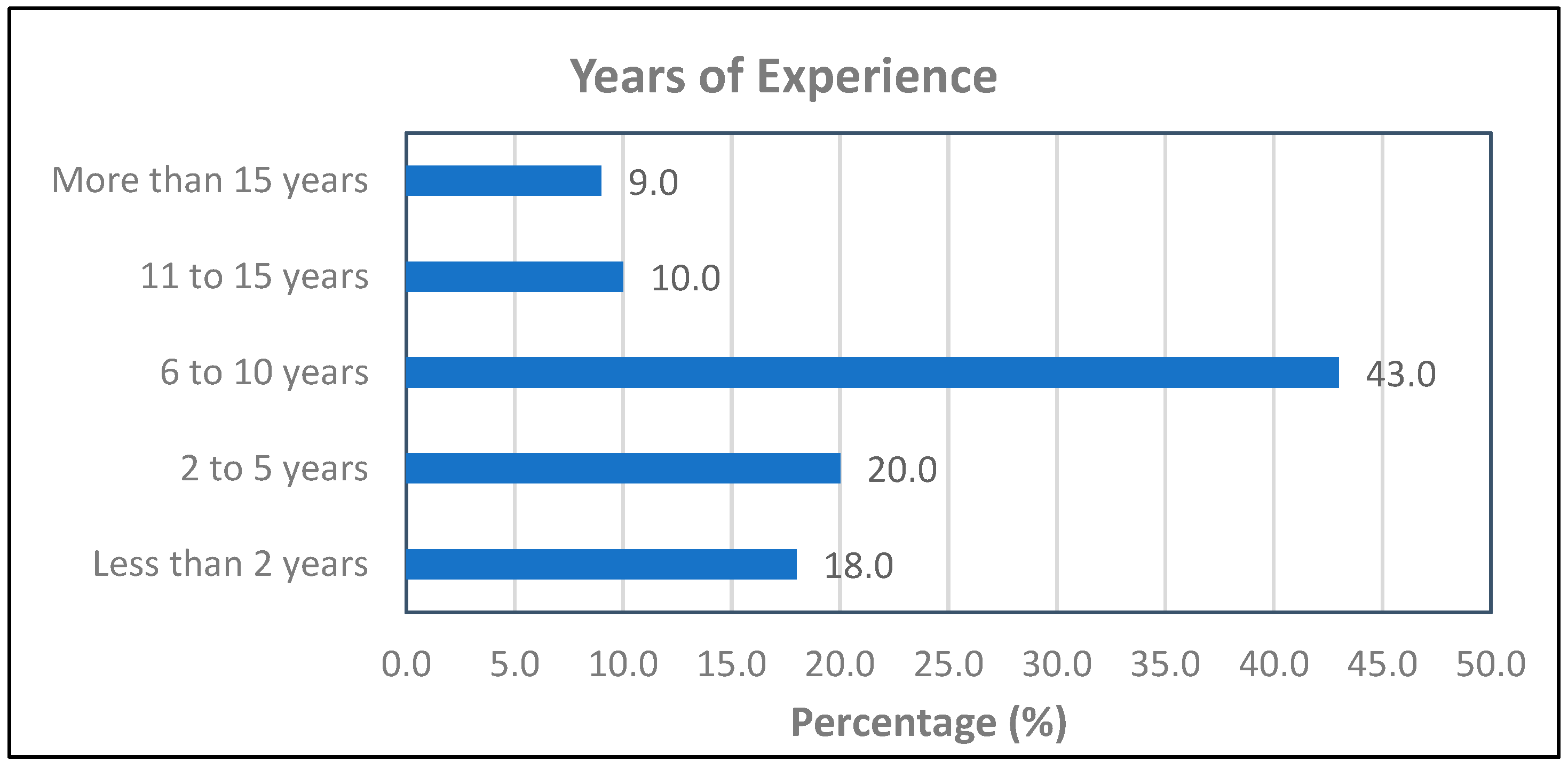
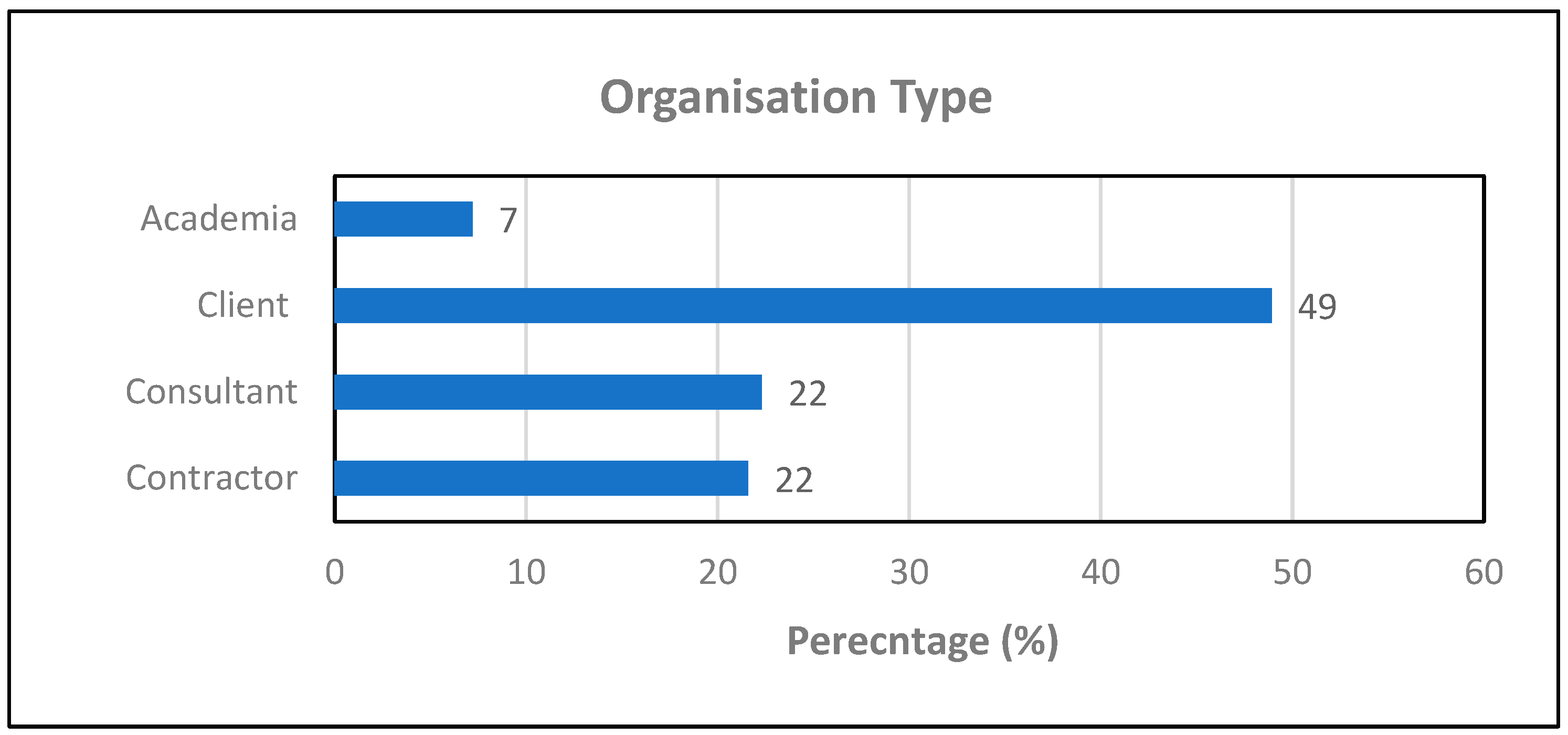
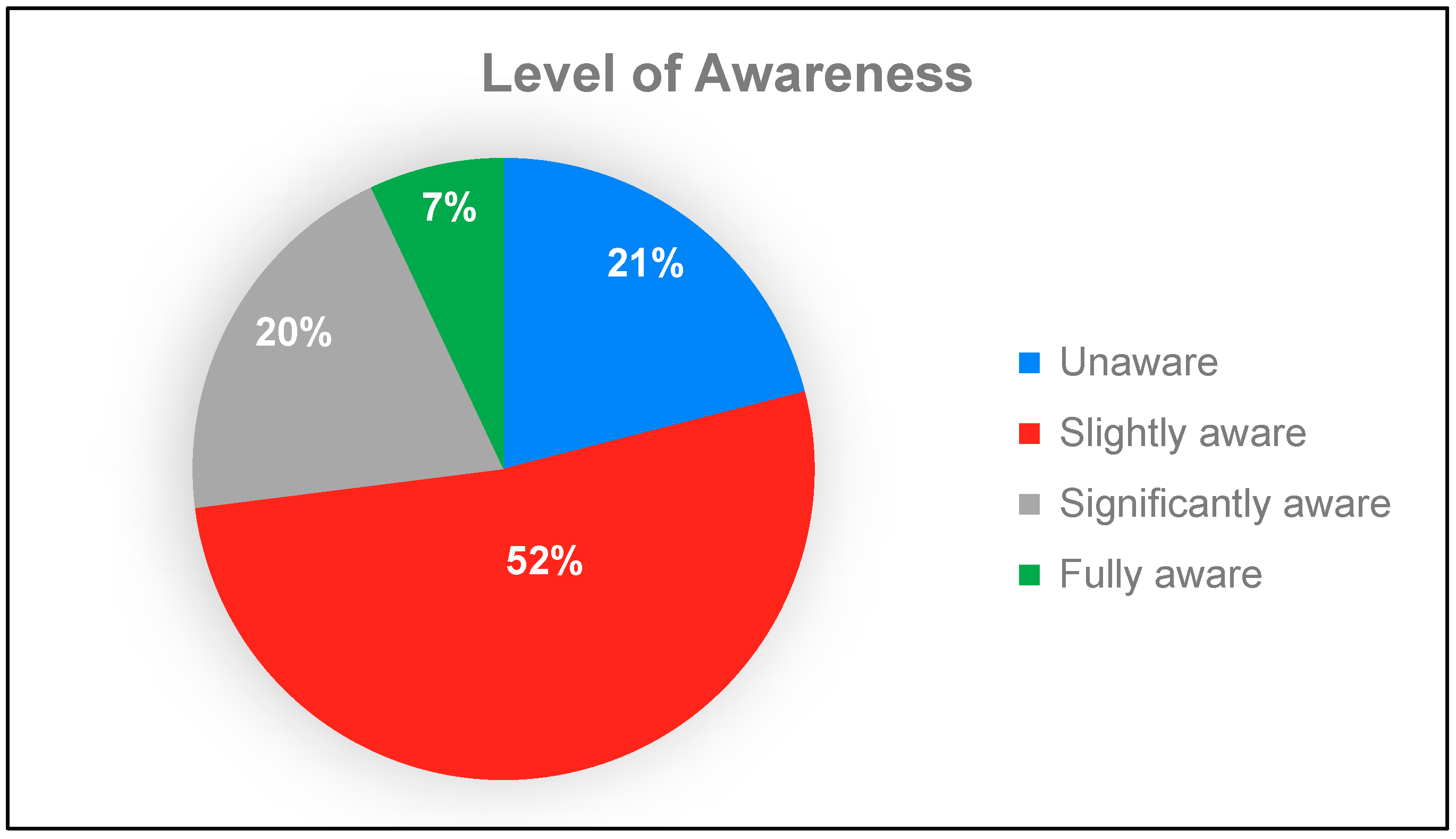
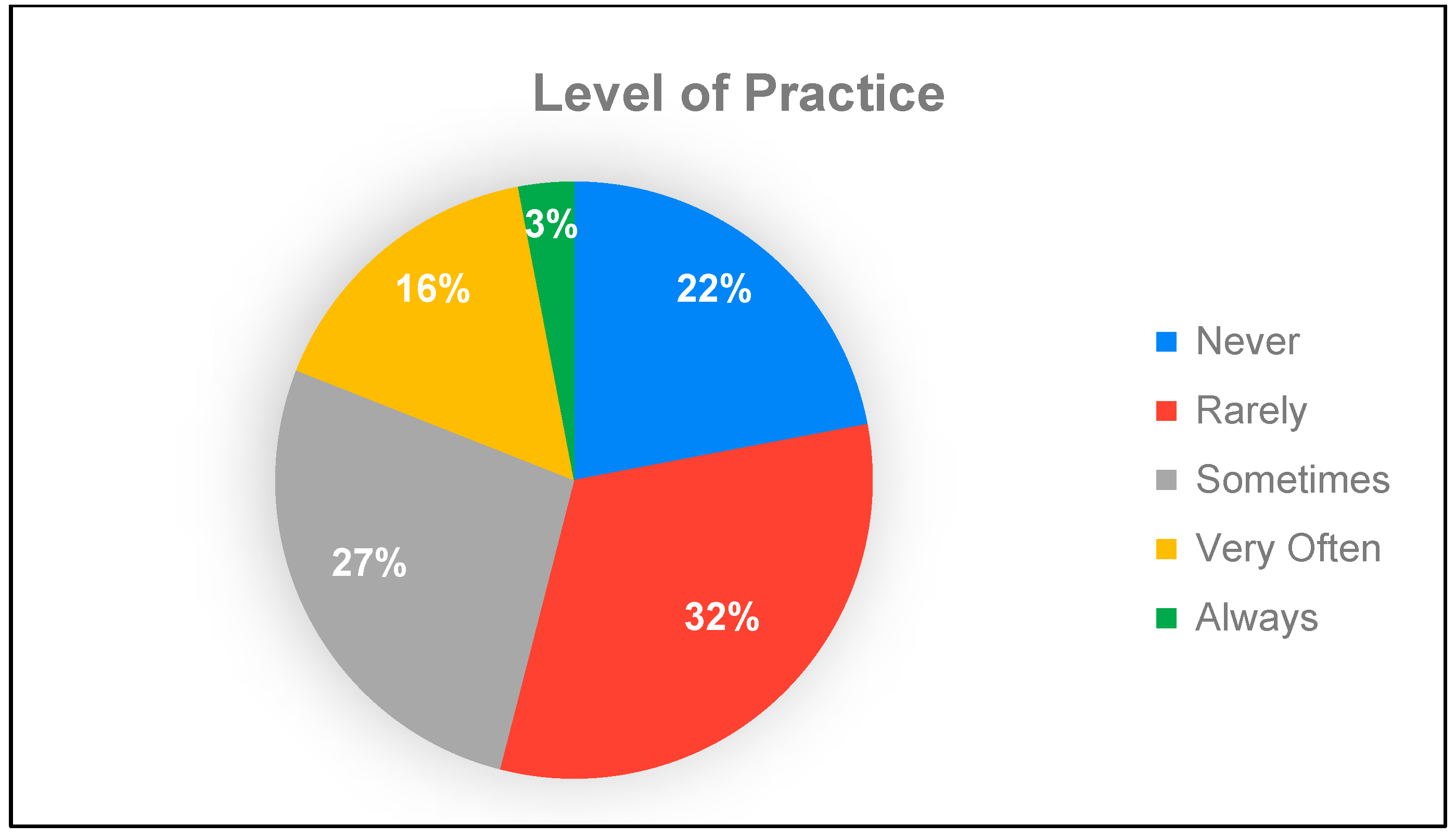
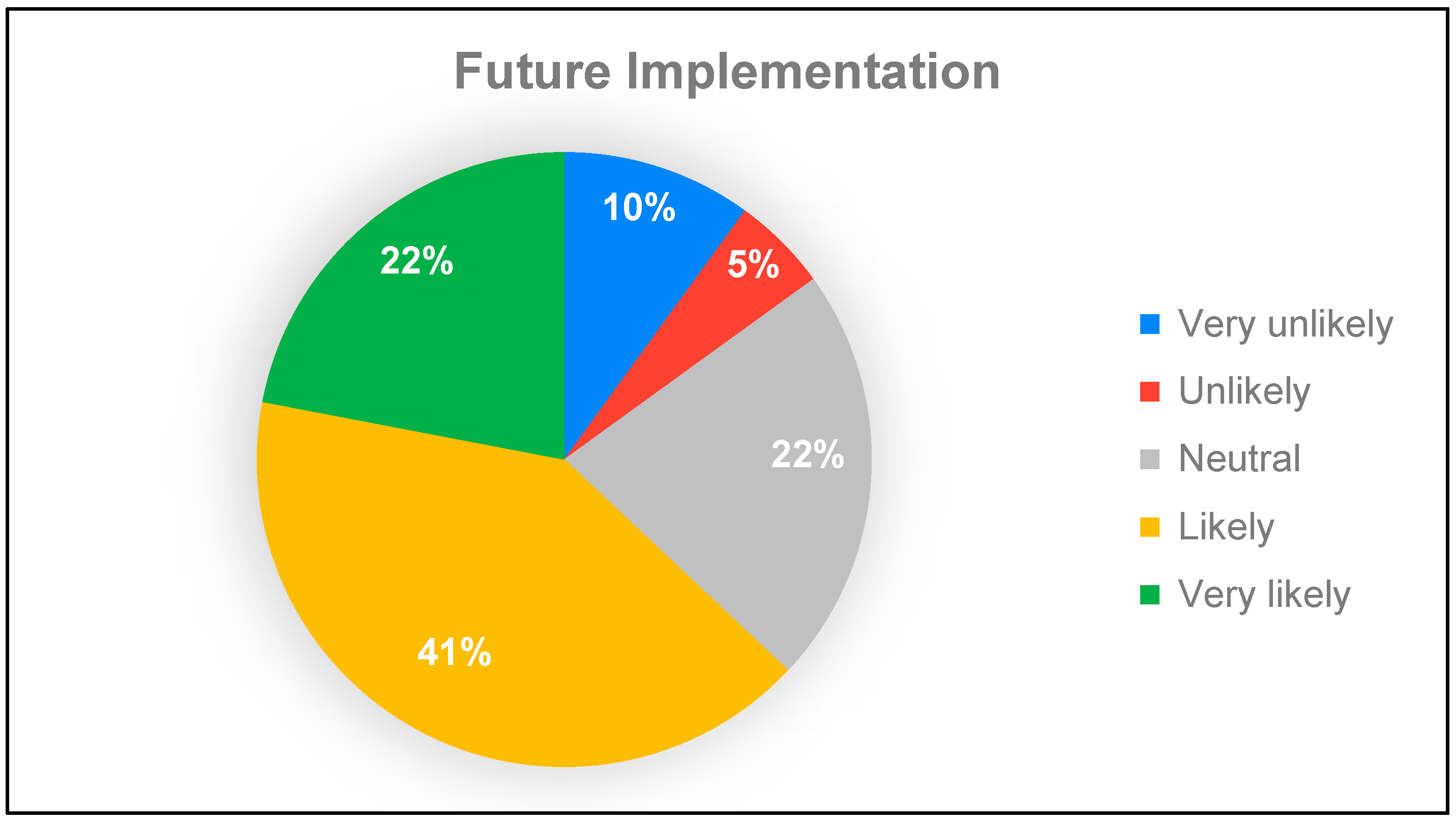
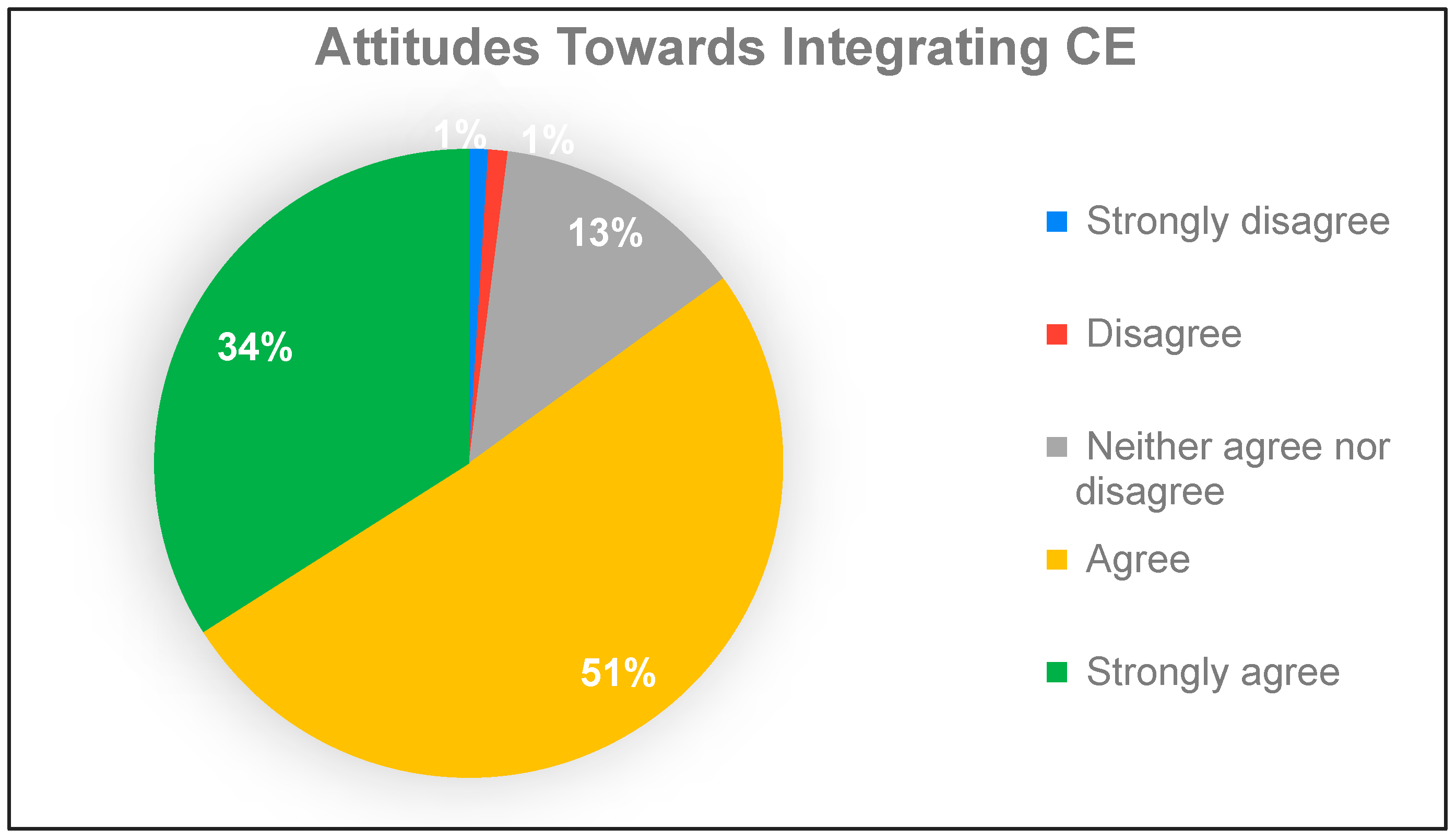
| Category | Barrier Code | Barrier | RII | Ranking across Constructs | Overall Rank | Importance Level |
|---|---|---|---|---|---|---|
| Awareness | A1 | Limited knowledge of CE | 0.678 | 5 | 20 | H–M |
| A1 | Lack of clearly defined national goals, targets, and vison for CE | 0.691 | 4 | 19 | H–M | |
| A3 | Fragment supply chain | 0.76 | 1 | 4 | H–M | |
| A4 | Lack of case studies | 0.737 | 3 | 10 | H–M | |
| A5 | Lack of adequate information/data about reused materials availability | 0.755 | 2 | 6 | H–M | |
| Technical | T1 | Buildings complexity | 0.702 | 5 | 18 | H–M |
| T2 | Quality of materials at end of life | 0.622 | 6 | 25 | H–M | |
| T3 | Policy and regulatory | 0.75 | 2 | 8 | H–M | |
| T4 | Absence of certification, quality assurance, standardisation of reused materials | 0.776 | 1 | 1 | H–M | |
| T5 | Lack of flexibility in the building codes and regulations | 0.714 | 3 | 14 | H–M | |
| T6 | Lack of CE metrics/tool/design | 0.705 | 4 | 17 | H–M | |
| Economic and market | E1 | Lack of market mechanisms for recovery | 0.768 | 1 | 2 | H–M |
| E2 | Cost of virgin materials | 0.656 | 6 | 22 | H–M | |
| E3 | A mismatch between supply and demand of reused materials | 0.706 | 5 | 16 | H–M | |
| E4 | Unclear financial case | 0.751 | 3 | 7 | H–M | |
| E5 | High upfront cost | 0.757 | 2 | 5 | H–M | |
| E6 | Cost of removing contaminated materials | 0.721 | 4 | 13 | H–M | |
| Implementation | I1 | Lack of storage facilities | 0.653 | 3 | 23 | H–M |
| I2 | Site constraints | 0.633 | 4 | 24 | H–M | |
| I3 | Inadequate CE infrastructure to support CE management | 0.673 | 2 | 21 | H–M | |
| I4 | Conservative and non-collaborative industry | 0.724 | 1 | 12 | H–M | |
| Support and promotion | P1 | Lack of incentives | 0.709 | 2 | 15 | H–M |
| P2 | Insufficient support from governmental institutions | 0.734 | 1 | 11 | H–M | |
| Social | S1 | Unrealistic hypothesis/Social flexibility | 0.765 | 1 | 3 | H–M |
| S2 | Lack of interest in CE | 0.745 | 2 | 9 | H–M |
| Category | B-Code | Barrier | Contractor | Consultant | Client | Academia | ||||
|---|---|---|---|---|---|---|---|---|---|---|
| RII | Rank | RII | Rank | RII | Rank | RII | Rank | |||
| Awareness | A1 | Limited knowledge of CE | 0.633 | 25 | 0.626 | 22 | 0.712 | 15 | 0.740 | 17 |
| A1 | Lack of clearly defined national goals, targets, and vison for CE | 0.687 | 19 | 0.658 | 17 | 0.694 | 18 | 0.600 | 20 | |
| A3 | Fragment supply chain | 0.780 | 4 | 0.716 | 6 | 0.765 | 2 | 0.800 | 11 | |
| A4 | Lack of case studies | 0.747 | 10 | 0.697 | 13 | 0.741 | 9 | 0.800 | 11 | |
| A5 | Lack of adequate information/data about reused materials availability | 0.740 | 11 | 0.742 | 2 | 0.759 | 3 | 0.820 | 8 | |
| Technical | T1 | Buildings complexity | 0.680 | 21 | 0.716 | 6 | 0.685 | 19 | 0.840 | 7 |
| T2 | Quality of materials at end of life | 0.673 | 22 | 0.587 | 25 | 0.612 | 25 | 0.640 | 19 | |
| T3 | Policy and regulatory | 0.720 | 15 | 0.723 | 5 | 0.750 | 5 | 0.920 | 1 | |
| T4 | Absence of certification, quality assurance, standardisation of reused materials | 0.853 | 1 | 0.716 | 6 | 0.747 | 6 | 0.920 | 1 | |
| T5 | Lack of flexibility in the building codes and regulations | 0.767 | 7 | 0.690 | 14 | 0.676 | 22 | 0.880 | 4 | |
| T6 | Lack of CE metrics/tool/design | 0.720 | 15 | 0.658 | 17 | 0.703 | 17 | 0.820 | 8 | |
| Economic and market | E1 | Lack of market mechanisms for recovery | 0.787 | 2 | 0.735 | 4 | 0.776 | 1 | 0.760 | 15 |
| E2 | Cost of virgin materials | 0.713 | 17 | 0.600 | 24 | 0.676 | 22 | 0.520 | 23 | |
| E3 | A mismatch between supply and demand of reused materials | 0.727 | 13 | 0.716 | 6 | 0.709 | 16 | 0.600 | 20 | |
| E4 | Unclear financial case | 0.787 | 2 | 0.710 | 10 | 0.735 | 11 | 0.880 | 4 | |
| E5 | High upfront cost | 0.780 | 4 | 0.768 | 1 | 0.732 | 12 | 0.820 | 8 | |
| E6 | Cost of removing contaminated materials | 0.740 | 11 | 0.703 | 11 | 0.729 | 13 | 0.660 | 18 | |
| Implementation | I1 | Lack of storage facilities | 0.653 | 24 | 0.632 | 21 | 0.682 | 20 | 0.520 | 23 |
| I2 | Site constraints | 0.673 | 23 | 0.619 | 23 | 0.638 | 24 | 0.520 | 23 | |
| I3 | Inadequate CE infrastructure to support CE management | 0.687 | 19 | 0.665 | 16 | 0.682 | 20 | 0.600 | 20 | |
| I4 | Conservative and non-collaborative industry | 0.713 | 17 | 0.671 | 15 | 0.747 | 6 | 0.760 | 15 | |
| Support and promotion | P1 | Lack of incentives | 0.727 | 13 | 0.639 | 19 | 0.724 | 14 | 0.780 | 13 |
| P2 | Insufficient support from governmental institutions | 0.753 | 9 | 0.639 | 19 | 0.747 | 6 | 0.880 | 4 | |
| Social | S1 | Unrealistic hypothesis/Social flexibility | 0.767 | 7 | 0.742 | 2 | 0.756 | 4 | 0.900 | 3 |
| S2 | Lack of interest in CE | 0.773 | 6 | 0.703 | 11 | 0.741 | 9 | 0.780 | 13 | |
| B-Code | A1 | A2 | A3 | A4 | A5 | T1 | T2 | T3 | T4 | T5 | T6 | E1 | E2 | E3 |
|---|---|---|---|---|---|---|---|---|---|---|---|---|---|---|
| A1 | 1 | |||||||||||||
| A2 | 0.483 ** | 1 | ||||||||||||
| A3 | 0.540 ** | 0.469 ** | 1 | |||||||||||
| A4 | 0.445 ** | 0.499 ** | 0.447 ** | 1 | ||||||||||
| A5 | 0.426 ** | 0.415 ** | 0.456 ** | 0.546 ** | 1 | |||||||||
| T1 | 0.293 ** | 0.257 ** | 0.395 ** | 0.264 ** | 0.396 ** | 1 | ||||||||
| T2 | 0 | 0.174* | 0.182 * | 0 | 0 | 0.270 ** | 1 | |||||||
| T3 | 0.249 ** | 0.310 ** | 0.311 ** | 0.256 ** | 0.357 ** | 0.243 ** | 0.207 * | 1 | ||||||
| T4 | 0.231 ** | 0.225 ** | 0.268 ** | 0.229 ** | 0.195 * | 0.217 * | 0.263 ** | 0.495 ** | 1 | |||||
| T5 | 0.220 ** | 0.215 * | 0.205 * | 0.201 * | 0.272 ** | 0.237 ** | 0.204 * | 0.448 ** | 0.452 ** | 1 | ||||
| T6 | 0.266 ** | 0.338 ** | 0.260 ** | 0.299 ** | 0.389 ** | 0.289 ** | 0.182 * | 0.399 ** | 0.403 ** | 0.418 ** | 1 | |||
| E1 | 0.214 * | 0.204 * | 0.257 ** | 0.280 ** | 0.288 ** | 0.337 ** | 0.252 ** | 0.381 ** | 0.346 ** | 0.248 ** | 0.516 ** | 1 | ||
| E2 | 0 | 0 | 0 | 0 | 0 | 0 | 0 | 0.186 * | 0 | 0 | 0 | 0 | 1 | |
| E3 | 0.168 * | 0.195 * | 0.224 ** | 0.168 * | 0.203 * | 0 | 0 | 0 | 0 | 0.216 * | 0.180 * | 0.232 ** | 0.458 ** | 1 |
| E4 | 0.189 * | 0.227 ** | 0.190 * | 0 | 0.197 * | 0 | 0.220 ** | 0 | 0.285 ** | 0.284 ** | 0.272 ** | 0.169 * | 0 | 0 |
| E5 | 0.196 * | 0.315 ** | 0.355 ** | 0 | 0.299 ** | 0.273 ** | 0.231 ** | 0.198 * | 0.345 ** | 0.225 ** | 0.306 ** | 0.289 ** | 0.217 * | 0.180 * |
| E6 | 0 | 0 | 0 | 0 | 0 | 0 | 0 | 0 | 0.205 * | 0 | 0 | 0.237 ** | 0.212 * | 0.217 * |
| I1 | 0.222 ** | 0 | 0.206 * | 0 | 0.284 ** | 0.252 ** | 0 | 0 | 0 | 0 | 0.246 ** | 0.394 ** | 0 | 0.170 * |
| I2 | 0 | 0 | 0 | 0 | 0.168 * | 0.299 ** | 0 | 0 | 0 | 0.270 ** | 0 | 0.263 ** | 0.203 * | 0.294 ** |
| I3 | 0 | 0 | 0 | 0 | 0.218 ** | 0.209 * | 0.251 ** | 0 | 0 | 0 | 0 | 0.228 ** | 0.313 ** | 0.225 ** |
| I4 | 0.303 ** | 0.307 ** | 0.190 * | 0.304 ** | 0.320 ** | 0.267 ** | 0 | 0.276 ** | 0.283 ** | 0.311 ** | 0.406 ** | 0.443 ** | 0.238 ** | 0.171 * |
| P1 | 0.307 ** | 0.297 ** | 0.223 ** | 0.173 * | 0.175 * | 0.216 * | 0 | 0.285 ** | 0.173 * | 0.293 ** | 0.329 ** | 0.212 * | 0 | 0 |
| P2 | 0.398 ** | 0.340 ** | 0.284 ** | 0.181 * | 0.177 * | 0.323 ** | 0 | 0.280 ** | 0.269 ** | 0.318 ** | 0.365 ** | 0.366 ** | 0 | 0 |
| S1 | 0.223 ** | 0.258 ** | 0.213 * | 0 | 0 | 0.169 * | 0 | 0.193 * | 0.315 ** | 0.279 ** | 0.311 ** | 0.247 ** | 0 | 0.223 ** |
| S2 | 0.294 ** | 0.237 ** | 0.320 ** | 0.291 ** | 0.210 * | 0.274 ** | 0 | 0 | 0.324 ** | 0.340 ** | 0.421 ** | 0.315 ** | 0 | 0.200 * |
| B-Code | E4 | E5 | E6 | I1 | I2 | I3 | I4 | P1 | P2 | S1 |
|---|---|---|---|---|---|---|---|---|---|---|
| E4 | 1 | |||||||||
| E5 | 0.425 ** | 1 | ||||||||
| E6 | 0.364 ** | 0.385 ** | 1 | |||||||
| I1 | 0.241 ** | 0.211 * | 0.387 ** | 1 | ||||||
| I2 | 0 | 0 | 0 | 0.526 ** | 1 | |||||
| I3 | 0 | 0.244 ** | 0.172 * | 0.201 * | 0.467 ** | 1 | ||||
| I4 | 0.323 ** | 0.352 ** | 0.214 * | 0.244 ** | 0.316 ** | 0.243 ** | 1 | |||
| P1 | 0.252 ** | 0.331 ** | 0 | 0 | 0 | 0.198 * | 0.483 ** | 1 | ||
| P2 | 0.309 ** | 0.463 ** | 0.185 * | 0.250 ** | 0.231 ** | 0.260 ** | 0.513 ** | 0.639 ** | 1 | |
| S1 | 0.242 ** | 0.315 ** | 0.262 ** | 0 | 0.179 * | 0 | 0.309 ** | 0.303 ** | 0.455 ** | 1 |
| S2 | 0.318 ** | 0.415 ** | 0.227 ** | 0.202 * | 0.185 * | 0.207 * | 0.471 ** | 0.347 ** | 0.447 ** | 0.657 ** |
| Enabler | RII | Rank | Importance Level |
|---|---|---|---|
| More Materials Storage and Recycling Facilities | 0.851 | 1 | H |
| Use of Building Information Modelling (BIM) | 0.800 | 2 | H |
| Technology and Innovation for Circular Building Tools | 0.797 | 3 | H–M |
| CE- Supportive Policy | 0.795 | 4 | H–M |
| Standardisation and Assurance Certification for Reused Materials | 0.793 | 5 | H–M |
| Circular Business Models | 0.791 | 6 | H–M |
| Development of Reused Materials Market | 0.788 | 7 | H–M |
| Financial Incentives | 0.784 | 8 | H–M |
| Collaboration and Stakeholder Engagement | 0.782 | 9 | H–M |
| Design Guidelines for Circular Buildings | 0.770 | 10 | H–M |
| Circular Building Case Studies | 0.770 | 10 | H–M |
| Awareness Campaigns | 0.761 | 12 | H–M |
| Material Passport | 0.752 | 13 | H–M |
| Education and Research | 0.723 | 14 | H–M |
| Enabler | Contractor | Consultant | Client | Academia | ||||
|---|---|---|---|---|---|---|---|---|
| RII | Rank | RII | Rank | RII | Rank | RII | Rank | |
| Design Guidelines for Circular Buildings | 0.783 | 4 | 0.774 | 8 | 0.765 | 11 | 0.750 | 12 |
| Circular Business Models | 0.767 | 7 | 0.766 | 10 | 0.794 | 3 | 0.925 | 2 |
| Standardisation and Assurance Certification for Reused Materials | 0.792 | 2 | 0.798 | 7 | 0.787 | 7 | 0.825 | 8 |
| Circular Building Case Studies | 0.767 | 7 | 0.766 | 10 | 0.768 | 10 | 0.800 | 9 |
| Use of Building Information Modelling (BIM) | 0.758 | 12 | 0.831 | 2 | 0.794 | 3 | 0.875 | 4 |
| More Materials Storage and Recycling Facilities | 0.833 | 1 | 0.847 | 1 | 0.846 | 1 | 0.950 | 1 |
| Awareness Campaigns | 0.767 | 7 | 0.694 | 14 | 0.790 | 6 | 0.750 | 12 |
| Financial Incentives | 0.783 | 4 | 0.806 | 3 | 0.765 | 11 | 0.850 | 6 |
| Education and Research | 0.767 | 7 | 0.718 | 13 | 0.713 | 14 | 0.675 | 14 |
| Collaboration and Stakeholder Engagement | 0.742 | 13 | 0.806 | 3 | 0.772 | 9 | 0.900 | 3 |
| CE-Supportive Policy | 0.783 | 4 | 0.806 | 3 | 0.783 | 8 | 0.875 | 4 |
| Development of Reused Materials Market | 0.792 | 2 | 0.774 | 8 | 0.794 | 3 | 0.775 | 11 |
| Technology and Innovation for Circular Building Tools | 0.767 | 7 | 0.806 | 3 | 0.798 | 2 | 0.850 | 6 |
| Material Passport | 0.742 | 13 | 0.758 | 12 | 0.746 | 13 | 0.800 | 9 |
Disclaimer/Publisher’s Note: The statements, opinions and data contained in all publications are solely those of the individual author(s) and contributor(s) and not of MDPI and/or the editor(s). MDPI and/or the editor(s) disclaim responsibility for any injury to people or property resulting from any ideas, methods, instructions or products referred to in the content. |
© 2024 by the authors. Licensee MDPI, Basel, Switzerland. This article is an open access article distributed under the terms and conditions of the Creative Commons Attribution (CC BY) license (https://creativecommons.org/licenses/by/4.0/).
Share and Cite
AlJaber, A.; Martinez-Vazquez, P.; Baniotopoulos, C. Circular Economy in the Building Sector: Investigating Awareness, Attitudes, Barriers, and Enablers through a Case Study in Saudi Arabia. Sustainability 2024, 16, 1296. https://doi.org/10.3390/su16031296
AlJaber A, Martinez-Vazquez P, Baniotopoulos C. Circular Economy in the Building Sector: Investigating Awareness, Attitudes, Barriers, and Enablers through a Case Study in Saudi Arabia. Sustainability. 2024; 16(3):1296. https://doi.org/10.3390/su16031296
Chicago/Turabian StyleAlJaber, Abdulaziz, Pedro Martinez-Vazquez, and Charalampos Baniotopoulos. 2024. "Circular Economy in the Building Sector: Investigating Awareness, Attitudes, Barriers, and Enablers through a Case Study in Saudi Arabia" Sustainability 16, no. 3: 1296. https://doi.org/10.3390/su16031296
APA StyleAlJaber, A., Martinez-Vazquez, P., & Baniotopoulos, C. (2024). Circular Economy in the Building Sector: Investigating Awareness, Attitudes, Barriers, and Enablers through a Case Study in Saudi Arabia. Sustainability, 16(3), 1296. https://doi.org/10.3390/su16031296







